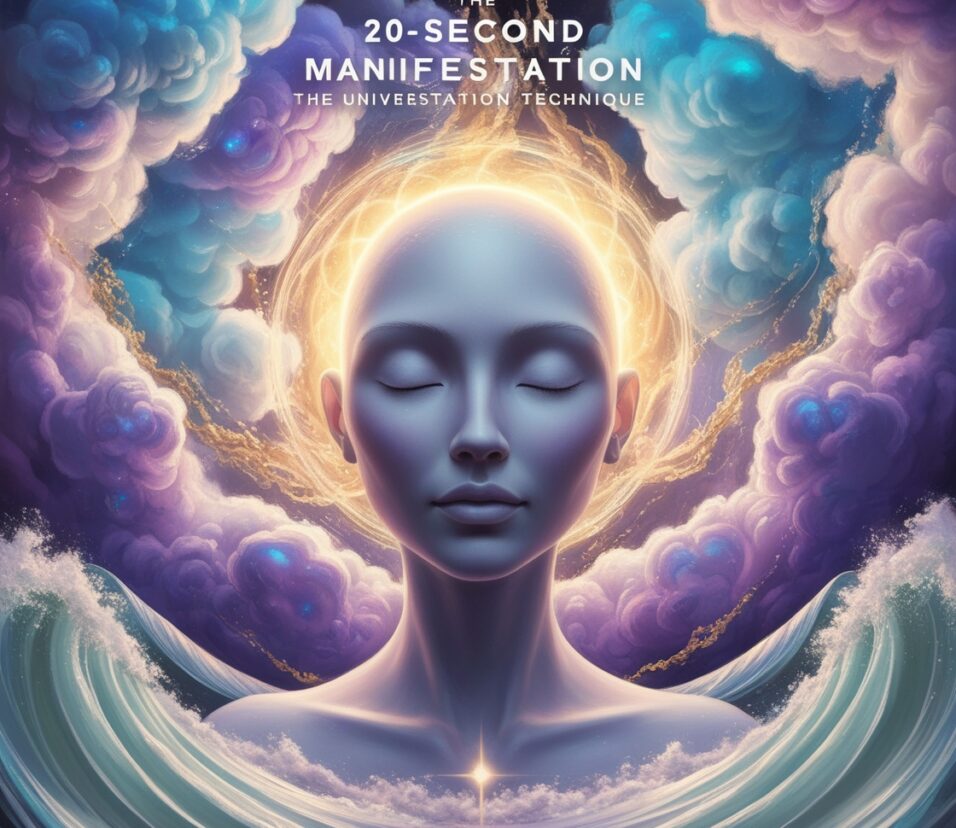Steps of Effective Visualization to attract abundance
- by Admin
- 0 Comments
- 15 minutes read
- 624 Views
The Law of Attraction has gained significant popularity in recent years, emphasizing the role of positive thinking and focused intention in manifesting one’s desires. One powerful tool within the realm of the Law of Attraction is the visualization technique. By harnessing the power of visualization, individuals can create a vivid mental image of their desired outcomes, thereby aligning their energy and attracting those desires into reality. In this article, we will explore the concept of visualization and delve into the steps to effectively utilize this technique to manifest your dreams.

What is Visualization?
Visualization is a practice that involves creating a detailed mental picture of what you desire to attract into your life. It’s about using your imagination to vividly experience the desired outcome as if it has already happened. By engaging your senses and emotions in this mental imagery, you align your energy with your goals and signal the universe to bring them into fruition.
What are the Essentials to Effective Visualization?
1. Clarity of Intent:
Clarity of intent is a crucial element in harnessing the power of the Law of Attraction. Clarity of intent refers to having a clear and specific understanding of what you want to manifest through the Law of Attraction. It involves defining your desires with precision, leaving no room for ambiguity or confusion. When your intentions are clear, you are better able to focus your energy and direct it towards the manifestation of your goals.
By defining your desires clearly, focusing your energy, enhancing visualization and affirmations, and eliminating conflicting messages, you create a strong alignment with your intentions. Remember, the more precise and specific you are about what you want, the stronger your energetic signal becomes, drawing your desires towards you with greater speed and ease.
The Law of Attraction teaches us that our thoughts and intentions have the power to shape our reality. One crucial aspect of harnessing this universal law is having clarity of intent. When we are clear about what we want to manifest and set clear intentions, we align our energy and attract the desired outcomes into our lives. In this article, we will explore the concept of clarity of intent and understand its significance in the Law of Attraction.
The Importance of Clarity of Intent
Focuses Your Energy:
Having clarity of intent enables you to focus your energy on specific goals. When your intentions are vague or scattered, your energy becomes diluted, making it challenging to attract what you truly desire. By defining your desires clearly, you concentrate your thoughts, emotions, and actions, creating a powerful energetic alignment that supports the manifestation process.
Enhances Visualization and Affirmations:
Clarity of intent plays a vital role in effective visualization and affirmations. When you have a precise vision of what you want to manifest, you can visualize it with greater detail and emotional involvement. This heightened visualization experience amplifies the impact of your practice, as you can vividly imagine yourself living your desired reality. Similarly, when affirming your intentions, clarity allows you to affirm specific statements that resonate with your goals, reinforcing their manifestation.
Sends a Clear Signal to the Universe:
The Law of Attraction is responsive to the vibrations we emit. By having clarity of intent, you send a clear and consistent signal to the universe about your desires. This clear signal acts as a beacon, attracting circumstances, resources, and opportunities that are in alignment with your intentions. The universe responds to the clarity of your intent by orchestrating the necessary synchronicities and manifestations to bring your desires into reality.
Eliminates Conflicting Messages:
When your intent is clear, you avoid sending conflicting messages to the universe. Clarity helps you align your thoughts, beliefs, and actions with your desires, eliminating any mixed signals that may hinder the manifestation process. By removing ambiguity and doubt, you create a harmonious energetic environment that supports the attraction of your goals.
Empowers Decision-Making:
Clarity of intent empowers you to make decisions that align with your desires. When you are clear about what you want, you can assess opportunities and choices based on whether they support your intentions. This clarity aids in discernment, allowing you to make choices that propel you closer to your desired outcomes, while avoiding distractions or detours that may hinder your progress.
2.Create a Relaxing Environment:
Find a quiet and comfortable space where you can focus without distractions. Create an ambiance that promotes relaxation, such as dim lighting, soothing music, or burning incense. This environment will help you enter a state of deep relaxation, making visualization more effective.
3.Engage Your Senses:
As you begin the visualization process, engage all your senses to make the experience more vivid. See the details of the scene in your mind’s eye, hear the sounds associated with your desired outcome, feel the textures, smell the scents, and even taste the flavors. The more sensory information you can incorporate, the more real and compelling the visualization becomes.
4.Embrace Emotions:
Emotions play a crucial role in the Law of Attraction and visualization. As you visualize, evoke the emotions you would feel once your desires are fulfilled – joy, excitement, gratitude, or contentment. Embracing these positive emotions amplifies your vibrational frequency, aligning you with the energy of your desires.
5.Repetition and Consistency:
Consistency is key in visualization practice. Incorporate visualization into your daily routine, allocating dedicated time to engage in this technique. Repetition strengthens the neural pathways associated with your desired outcome, making it easier to manifest. The more you visualize, the more you reinforce your belief in the possibility of your dreams.
6.Let Go and Trust:
After completing your visualization practice, release any attachment to the outcome. Trust that the universe is working to bring your desires to fruition in the most appropriate timing and manner. Avoid dwelling on the “how” and “when” of manifestation, as this may create resistance. Instead, surrender to the process and have faith in the unseen forces at work.
Does visualizing success work?
Visualizing outcomes that you want can increase your confidence. “Seeing” yourself succeed helps you believe that it can – and will – happen. Visualization helps you “practice” success. When you imagine every step of an event or activity going well, you get your mind and body ready to take those steps in real life.The more you visualize it, the more you can see and believe that it is possible in your life.
Activation of the mind-body connection
When we visualize, our brain activates similar neural pathways as when we experience the event in reality. This phenomenon is called “neuroplasticity,” which refers to the brain’s ability to adapt and change based on our experiences and thoughts. The activation of the mind-body connection refers to the integration of mental and physical aspects during the process of visualization. This approach recognizes that our mental and physical states are interconnected, and by engaging both aspects, individuals may experience enhanced cognitive and physiological benefits.
Stimulating positive emotions
Visualization also directly impacts our emotions. By imagining positive scenarios, we stimulate corresponding positive emotions such as joy, calmness, or confidence. This way, we can counteract stress, anxiety, and negative thought patterns.
Enhancing mindfulness and focus
Another aspect of visualization is its ability to enhance mindfulness. When we engage in visualization exercises, we direct our attention to the mental images we create, enabling us to concentrate, be more present, and better manage distractions.
How to practice Visualization?
Practicing visualization techniques involves incorporating mental imagery into your routine to achieve specific goals, reduce stress, or enhance overall well-being. Here’s a step-by-step guide to help you practice visualization effectively:
Set Clear Goals:
Define the purpose of your visualization practice. Whether it’s reducing stress, achieving a goal, or enhancing performance, having a clear objective will guide your visualization sessions.
Choose a Quiet Space:
Find a quiet and comfortable space where you can sit or lie down without distractions. This helps create an environment conducive to relaxation and focused visualization.
Relax Your Body:
Before starting the visualization, engage in relaxation techniques. Practice deep breathing or progressive muscle relaxation to release physical tension and prepare your body for the mental imagery to come.
Clarify Mental Images:
Close your eyes and begin to form clear and vivid mental images related to your goal or desired outcome. Focus on details, colors, and textures to make the visualization as realistic as possible.
Engage Your Senses:
Incorporate all your senses into the visualization. Imagine not just what you see but also what you hear, smell, taste, and feel. Engaging multiple senses enhances the richness of the experience.
Positive Emotional Connection:
Connect positive emotions with your visualization. Feel the joy, excitement, and satisfaction associated with achieving your goal or experiencing the desired outcome. Emotions add depth and authenticity to the mental imagery.
Use Guided Imagery :
If you find it challenging to create your own visualization, consider using guided imagery resources. There are audio recordings, apps, and guided meditation sessions that can lead you through the process.
Practice Regularly:
Consistency is key. Set aside time each day to practice visualization. It could be in the morning, before bed, or during breaks. The more you practice, the more effective it becomes over time.
Start with Short Sessions:
Especially if you’re new to visualization, start with shorter sessions (5-10 minutes) and gradually increase the duration as you become more comfortable with the practice.
Combine with Affirmations:
Integrate positive affirmations into your visualization. Speak or think positive statements that align with your goals to reinforce a positive mindset.
Reflect and Adjust:
After each session, take a moment to reflect on the experience. Note any insights, emotions, or changes in mindset. Adjust your visualization as needed to make it more effective and aligned with your goals.
Visualization Journal:
Consider keeping a journal to document your visualizations, goals, and experiences. Track your progress over time and use the journal as a tool for reflection and motivation.
What are the affirmations of Visualization?
Certainly! Affirmations are positive statements that can help reinforce your beliefs, focus your mind, and align your thoughts with your goals. When incorporating affirmations into visualization, it’s beneficial to phrase them in the first person as if you’re already experiencing the desired outcome. Here are some affirmations for visualization:
Health and Well-Being:
“I am grateful for my strong and healthy body. Every day, I am nourishing myself with positive energy, and my well-being is thriving.”
Confidence and Self-Esteem:
“I radiate confidence, self-respect, and inner harmony. I believe in my abilities, and I trust myself to overcome any challenges that come my way.”
“I am confident in my ability to achieve anything I set my mind to.”
“My mind is clear, focused, and ready to manifest my dreams.”
Success and Achievement:
“I am the architect of my life, and I am achieving my goals with ease. Success flows to me effortlessly, and I celebrate my accomplishments every step of the way.”
“Everyday, I am moving closer to my goals.”
Abundance and Prosperity:
“I am a magnet for prosperity, and my life is filled with abundance. I attract wealth and opportunities, and I am open to the infinite possibilities that the universe provides.”
Love and Relationships:
“I am deserving of love, and I attract positive and fulfilling relationships into my life. I radiate love and kindness, creating meaningful connections with others.”
“I am surrounded by love, joy, and positive energy.”
“I am worthy of success and happiness.”
Creativity and Inspiration:
“My mind is a wellspring of creativity, and I am inspired to express my unique talents. I am open to new ideas and embrace the creative flow within me.”
Inner Peace and Calm:
“I am at peace with myself and the world around me. In moments of challenge, I remain calm, centered, and focused on solutions.”
Personal Growth and Learning:
“I am constantly growing and evolving. Every experience is an opportunity for learning and self-discovery. I embrace change with a positive and open heart.”
Positivity and Optimism:
“I choose positive thoughts and believe in the power of optimism. My outlook is bright, and I attract positivity into every area of my life.”
“I attract positive energy into my life.”
Gratitude and Appreciation:
“I am grateful for the abundance in my life. I appreciate the beauty, love, and opportunities that surround me, and I attract even more to be thankful for.”
“I am grateful for the opportunities that come my way.”
What are the misconceptions about Visualization?
While visualization is a widely recognized and effective technique, there are some misconceptions associated with it. It’s important to be aware of these misconceptions to ensure a realistic understanding of the practice. Here are a few common misconceptions about visualization:
Instant Results:
Misconception:
Some individuals may expect immediate and dramatic results from visualization, assuming that a single session will bring about significant changes.
I previously had this misconception when I was starting my journey.
Reality:
Visualization is a skill that develops over time with consistent practice. While it can have positive effects, often require ongoing effort and patience.
Due to immense patience most people do it half way, even less.
Substitute for Action:
Misconception:
One might think that visualizing success is a substitute for taking real-world actions toward one’s goals.
Reality:
Visualization is a complement to action, not a replacement. It can enhance motivation, focus, and mindset, but tangible efforts and actions which are crucial for achieving results.
Universal Success Guarantee:
Misconception:
There’s a belief that visualization guarantees success for everyone in every situation.
Reality:
Visualization is a tool that works differently for each individual. Success depends on various factors, including the specificity of goals, effort, and external circumstances.
Remember, “there is no shortcut way to success”
Passive Practice:
Misconception:
Some people may view visualization as a passive activity, thinking that merely visualizing outcomes will bring about change.
Reality:
Effective visualization often involves a combination of mental imagery, emotional engagement, and subsequent actions. It’s an active process that complements effort and determination.
Exclusive to Positive Thinking:
Misconception:
Visualization is sometimes equated solely with positive thinking, and negative thoughts are seen as detrimental to the process.
Reality:
While maintaining a positive mindset is beneficial, acknowledging and addressing challenges realistically in visualizations can be equally important. Problem-solving and overcoming obstacles can be integral parts of the visualization process.
One-Size-Fits-All Approach:
Misconception:
There’s a belief that a single visualization technique will work for everyone in the same way.
Reality:
People have different preferences, learning styles, and responses to visualization. The effectiveness of techniques can vary, and individuals may need to explore different approaches to find what works best for them.
You cannot fit into other person’s shoe.
Lack of Scientific Support:
Misconception:
Some may perceive visualization as pseudoscience, not consistent with the principles of science.
Reality:
Scientific research supports the effectiveness of visualization in various domains, including sports psychology, performance enhancement, and stress reduction. However, individual experiences can still vary.
Exclusively Mental Practice:
Misconception:
Visualization is sometimes thought to be limited to mental practice without any impact on physical outcomes.
Reality:
Visualization often involves a mind-body connection. Engaging the senses and emotions can influence both mental and physical states.
Understanding these misconceptions can help individuals approach visualization with a realistic mindset, recognizing its potential benefits while appreciating its role as a part of a broader strategy for personal development and goal achievement.
Success stories of Visualization
Visualization, or mental imagery, is a technique often used in various fields to achieve success and enhance performance. While it’s important to note that individual experiences may vary, here are a few general examples of how visualization has contributed to real-life success stories:
Sports Achievements:
Athletes frequently use visualization to enhance their performance. For instance, tennis player Billie Jean King, in her autobiography, mentioned how she visualized winning matches before actually playing them. Michael Phelps, the most decorated Olympian in history, has also spoken about his use of visualization to prepare for races, imagining every detail of a perfect swim.
Business Success:
Successful entrepreneurs often attribute their achievements to visualization. Oprah Winfrey, for example, is known to have used visualization techniques to picture her success before it happened. Jim Carey famously wrote himself a check for $10 million for “acting services rendered” and dated it for five years in the future, visualizing his success. He later received a movie role that paid him $10 million.
Health and Healing:
Visualization has been linked to health benefits and recovery. Numerous cancer patients, for instance, have reported using visualization to see their bodies fighting and overcoming the disease. While not a substitute for medical treatment, this positive mindset and visualization are believed by some to contribute to the healing process.
Academic Achievements:
Students have found success through visualization by imagining themselves succeeding in exams and academic pursuits. This positive mental rehearsal can help reduce anxiety and enhance focus, potentially leading to better academic performance.
Creative Endeavors:
Many artists, musicians, and writers have credited visualization for their creative success. Composer Ludwig van Beethoven, despite losing his hearing, could “hear” the music in his mind. Authors often visualize the scenes they are writing about before putting pen to paper, helping them create vivid and impactful storytelling.
Goal Achievement in Personal Development:
Individuals in personal development fields often advocate for visualization to achieve personal goals. Jack Can field, co-author of the “Chicken Soup for the Soul” series, emphasizes the importance of visualization in goal setting. He teaches techniques like creating vision boards and regularly visualizing the achievement of one’s goals.
It’s important to approach these stories with an understanding that visualization is just one component of a larger process that often involves dedication, hard work, and other factors. The power of visualization lies in its ability to focus the mind, enhance motivation, and create a positive mindset conducive to success.
Visualization is a powerful technique that can unlock the potential of the Law of Attraction. By harnessing the creative power of your mind and engaging your senses and emotions, you can align your energy with your desires and manifest them into your reality. Remember, consistency, clarity, and belief are key in this practice. So, close your eyes, visualize your dreams, and watch as the universe conspires to bring them to life.







Leave feedback about this